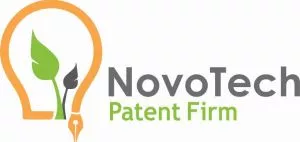The world of artificial intelligence (AI) is evolving at a rapid pace. With this evolution, the landscape of AI patents is also changing dramatically.
AI patents play a crucial role in protecting intellectual property. They safeguard the rights of inventors and businesses in the AI field.
However, patenting AI-related inventions presents unique challenges. These challenges stem from the complex nature of AI and the traditional patenting approaches.
This article aims to provide a comprehensive understanding of AI patents. It will delve into the patenting process, the criteria for patentability, and the implications for the industry.
We will also explore the future outlook of AI patents. Whether you're an AI developer, a tech entrepreneur, or simply interested in the intersection of AI and patent law, this article will offer valuable insights.
Understanding AI Patents
AI patents are a form of intellectual property that protect AI inventions, granting the holder exclusive rights to use, sell, or license the patented technology.
The significance of AI patents is immense. They establish a legal framework to safeguard the rights of inventors and businesses, which is crucial in the highly competitive and rapidly evolving field of AI. Given that most of the inventions I encounter are AI-related, it's essential to stay informed about innovations and emerging trends in this space.
Earlier this year, I attended the Consumer Electronics Show (CES), widely regarded as the premier tech event globally. AI's presence was pervasive, and Intel CEO Patrick P. Gelsinger likened his excitement about the groundbreaking innovations in AI to the enthusiasm he felt when computers were first introduced 40 years ago. From digital health devices to cooking grills, AI innovations were everywhere.
However, patenting artificial intelligence technologies comes with its own set of complexities. The self-learning and evolving nature of AI poses unique challenges in the patenting process.
- AI inventions must be novel, non-obvious, and useful.
- They must also be clearly defined and specific from technical standpoint in their claims.
- The patent application must include a detailed description of the AI invention and describe how the invention provides a technical solution to a technical problem.
What Makes an AI Invention Patentable?
For an AI invention to be patentable, it must meet certain criteria. These criteria are set by patent laws and vary from one jurisdiction to another.
The first criterion is novelty. The AI invention must be new and not previously disclosed to the public. This means it must not have been published, used, or sold before the patent application's filing date. U.S. patent laws provide some exceptions for disclosures, uses, or sales by the inventors if they occurred less than a year before filing.
The second criterion is non-obviousness. The AI invention must not be obvious to a person skilled in the relevant field. This means it must involve an inventive step that is not obvious to an expert in the field.
The third criterion is utility. The AI invention must have a practical use. This means it must be capable of being used in a useful way.
The Growth of AI Patent Filings
The last decade has seen an exponential growth in AI patent filings. This growth patents in AI reflects the rapid advancements in AI technology and its increasing commercial value.
The United States, China, and Europe are leading in AI patent filings. These regions have recognized the potential of AI and are investing heavily in AI research and development.
The Patenting Process for AI
The patenting AI ideas is similar to that for other types of inventions. However, it has its unique aspects due to the nature of AI technology.
The first step is to prepare a patent application. This includes a detailed description of the AI invention, claims defining the scope of the invention, and any drawings necessary to understand the invention.
The patent application is then filed with the patent office. The patent office reviews the application to determine if the AI invention meets the criteria for patentability.
- The patent office checks the novelty, non-obviousness, and utility of the AI invention.
- It also checks the clarity and specificity of the patent claims.
- If the patent application meets all the requirements, the patent office grants the patent.
Challenges in AI Patenting
Patenting AI inventions comes with its unique set of challenges, the most significant being patent-eligible subject matter. This criterion differs from the patentability criteria mentioned earlier.
While patentability focuses on whether the invention is novel and non-obvious—relatively easy hurdles for AI innovations—patent eligibility addresses a different question. It asks whether the invention falls into one of the four categories recognized as patent-eligible under the U.S. Patent Act Section 101: process, machine, manufacture, or composition of matter.
This status was broadly interpreted to cover almost anything under the sun until the Supreme Court's Alice decision in 2014. In Alice, the Court reminded us that there are implicit exceptions to these four categories, including abstract ideas, laws of nature, and natural phenomena. While it's generally clear what constitutes laws of nature and natural phenomena, the definition of an abstract idea remains ambiguous, and the Supreme Court offered little guidance on this.
Due to this uncertainty, software innovations were often mistakenly categorized as abstract ideas, leading to many rejections by the USPTO from 2014 to at least about 2016. This caused a misconception that software innovations were not patentable, despite significant innovation occurring in the software space. In 2016, the USPTO issued guidance to examiners, which was further refined in 2019, clarifying that software innovations are patent-eligible as long as they are not directed to abstract ideas. This provided clarity for examiners but didn't fully address AI innovations.
Last week, the USPTO released updated 2024 Guidance specifically for the patent eligibility of AI inventions. This new guidance aims to help examiners navigate the complexities introduced by the Alice decision when evaluating AI-related patent applications. By offering clear instructions and examples, it ensures that AI innovations are assessed consistently and fairly. In my opinion, this guidance effectively provides the necessary direction, ultimately benefiting those of us working on AI and machine learning inventions.
Key Takeaways from July 2024 USPTO Guidance on Patent Eligibility of AI Inventions:
- Evaluate Technical Improvements: The USPTO acknowledges that many AI-related claims qualify as improvements to computer operations or advancements in technological areas. Examiners are reminded that determining technological improvement depends on whether a claim presents a technical solution to a technical problem, rather than just stating the solution or outcome. Patent practitioners should continue to ensure that a technical explanation of the improvement is clearly outlined in the specification and that the claim mirrors this improvement. See, July 2024 Subject Matter Eligibility Examples on page 12 (stating "[t]o evaluate an improvement to a computer or technical field, the specification must set forth an improvement in technology and the claim itself must reflect the disclosed improvement.")
- Specific Application of AI to a Particular Technological Field: When dealing with AI-related inventions, the initial phase of the Alice test typically examines whether the claims showcase specific advancements in computer capabilities or merely utilize AI tools for processing abstract ideas. Therefore, when crafting claims, practitioners should emphasize the technical aspects and describe the functional mechanisms from a technical standpoint, rather than relying solely on broad functional descriptions. See, 2024 Guidance Update on Patent Subject Matter Eligibility on page 26 (stating "AI inventions may provide a particular way to achieve a desired outcome when they claim, for example, a specific application of AI to a particular technological field (i.e., a particular solution to a problem").
The Future Outlook for AI Patents
Given the recent July 2024 USPTO Guidelines on patent eligibility for AI inventions, I expect AI patent applications to get approved more smoothly. As AI continues to evolve, new categories of AI patents will likely emerge.
Moreover, AI's role in the patent process itself will likely expand. AI can streamline the patent application process, assist in patent examination, and help identify patentable subject matter.
AI as Inventors: Legal Implications
One of the most debated topics in AI patenting is whether AI systems can be inventors. Current patent laws do not recognize AI systems as inventors, but this could potentially change as AI technology advances.
On October 30, 2023, an Executive Order by President Biden directed the USPTO to publish comprehensive guidance within 120 days for both patent examiners and applicants on the subject of inventorship and the use of AI, including generative AI, in the inventive process. In response, on February 13, 2024, the USPTO released such Guidance. The guidance affirms that AI-assisted inventions are eligible for patent protection as long as a human made a "significant contribution" to the claimed invention.
To this end, the guidance draws upon existing case law, specifically Thaler v. Vidal, 43 F.4th 1207, 1213 (Fed. Cir. 2022), cert denied, 143 S. Ct. 1783 (2023), and Pannu v. Iolab Corp., 155 F.3d 1344 (Fed. Cir. 1998). According to the Thaler ruling, a patent application must name only a natural person as an inventor. The Pannu ruling further stipulates that this person must have made a "significant contribution" to the claimed invention.
Conclusion
The future of AI patents is a complex and evolving landscape. Advancements in AI technology, legal and ethical debates, and the potential for AI to disrupt the patent process itself shape this landscape.
Anyone involved in AI development, patent law, or the broader technology industry must stay informed about these changes.
The content of this article is intended to provide a general guide to the subject matter. Specialist advice should be sought about your specific circumstances.


